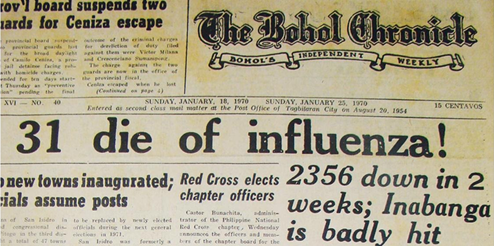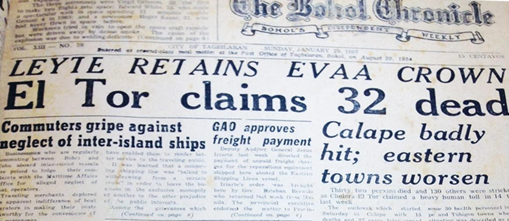Imagine yourself three months ago reading today’s issue of The Bohol Chronicle. Yes, let’s do a little time travel and that would be Dec 29, 2019, also a Sunday; a very relaxing one with the next three days being non-working holidays.
In all probability, you would not believe three months ago what’s in the news today. No social gatherings. No “non-essential” work. No schools. Closed churches even on a Sunday. Malls and stores closing early. Empty streets at night. Indeed, deep in December, nothing would suggest of a melancholic March. But then, it’s in the paper.
A vital role of newspapers is not only delivering the latest news to the people but also documenting the events that happened or recording history while the facts are still in the process of unfolding. As it is said, journalism is history written in a hurry.
True to such calling and as its name suggests, The Bohol Chronicle has chronicled the events and history of Bohol. For the past 65 years, it has become the main supplier of news for Boholanos residing in the island and all over the globe. Except for one issue during the Martial Law period, it has not missed coming out every Sunday. A hard copy of every issue is kept in its archives since May 16, 1954, when the paper first hit the streets of Tagbilaran, then a town at that time.
While doing the research for the paper’s diamond anniversary book, I had come across several “hard-to-believe” news items that made it to the headlines. A few years back, who would believe that some kind of flu would get 10,000 Boholanos sick as the news headlines of 1957 screamed. And again, influenza claiming 31 lives in 1970? But then, it’s in the paper.




